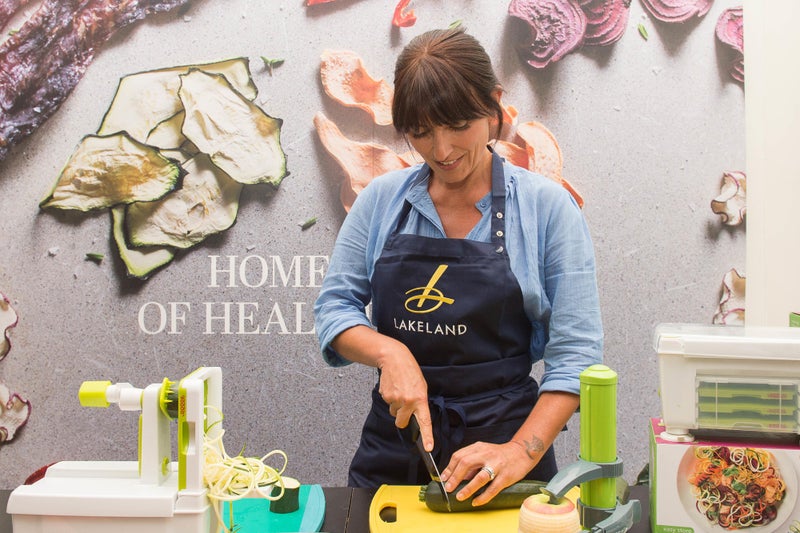Supermarkets and high street stores are full of cheap cups, cushions and ceramics. How can it ever be a good deal for designers, factory workers – or the planet?. The Guardian’s journalism is independent. We will earn a commission if you buy something through an affiliate link. Learn more. Walk into any big UK supermarket, and somewhere between the pasta and pet food you’ll find an aisle stacked with seductively stylish yet affordable homeware. From tableware to throws, cushions to coasters, objets d’art to duvet covers, the shelves will be teeming with everything you could possibly need to furnish your home – all in the latest shades and styles, and most costing less than the price of a takeaway.
![[A white bath with blue, bubbly water in it, surrounded by yellow tiles, and with multiple candles and soap dispensers lined up all around the edge]](https://i.guim.co.uk/img/media/0ff82bff0e6ef64b81467b162870d7a55a0c8e16/0_0_8533_5688/master/8533.jpg?width=445&dpr=1&s=none&crop=none)
Just a few years ago, this would have seemed strange, but with Asda, Sainsbury’s and Tesco all launching own-brand homeware ranges in the past decade, and the expansion of Lidl and Aldi, both known for their “middle aisle” bargains, purchasing homewares during the weekly shop has become the new normal. “If there were bits and bobs that could be bought, I would buy them,” admits Scottish former cheap homeware addict Carol Murdoch, 42. “You’d go shopping for a loaf of bread and come home with a candle.
![[A bed with orange bedding and a green striped pillow, with multiple decorative bedside lights on a blue bedside table, in a room with orange walls]](https://i.guim.co.uk/img/media/9d6e9cdeb6034a7900eeb9f783c60477dc836a2b/0_0_8688_5792/master/8688.jpg?width=445&dpr=1&s=none&crop=none)
“It took doing my master’s in sustainability for me to actually look at it, and go: ‘We’re being completely conned here,’” says the former teacher, and director at an outdoor learning company. “As much as I now go, ‘Blooming heck!’, I did it – I bought homeware, all the time, without giving it a second thought.”. In recent years, fast fashion has faced a reckoning – in part due to the Rana Plaza disaster in 2013, in which 1,134 people were killed and at least another 2,000 injured when a factory collapsed in Bangladesh. The garment workers inside – who operated in sweatshop conditions, earning less than $2 (£1.60) a day – made clothes for big name high street retailers, including Primark and Matalan. Since then, a slew of initiatives – from sustainable fashion week to Second Hand September – have changed how many of us buy and think about clothes.
![[A vase with a round lower section with small handles, and a funnel-shaped section coming out of it]](https://i.guim.co.uk/img/media/4145a7b73bd1cbb22b6aee49e95a5d924be51b60/0_0_1654_1004/master/1654.jpg?width=445&dpr=1&s=none&crop=none)
Yet, at the same time, the ever-growing fast homeware industry has slipped under the radar. According to market and consumer data provider Statista, the UK homeware market has “expanded substantially” in the past decade. Business intelligence platform GlobalData estimates the industry was worth £14.32bn in 2023, with discount sellers witnessing the strongest growth, and key retailers including Dunelm, B&M, Ikea, The Range, Amazon and John Lewis.
![[A tall ceramic vase with tiny handles near the top]](https://i.guim.co.uk/img/media/5a1a1a759c39e0e5eb32b7eb792bc4a33c2fe6f9/0_0_1654_1004/master/1654.jpg?width=445&dpr=1&s=none&crop=none)
The homeware market began to speed up in the years after the second world war, when brands such as Ercol – whose original designs are now highly sought-after as vintage pieces – began mass-producing modern, affordable furniture. By the 1970s, Ikea was expanding worldwide, opening its first UK store in 1987. Throughout the 1990s, production continued to grow. When Urban Outfitters arrived in the UK in 1998, it changed the game again; highly curated, trend-led homewares and gifts mingled with shoes and clothes. It was selling a lifestyle, and it wasn’t long before the rest of the high street caught on.
![[A glass tumbler with blue and green smudges on it]](https://i.guim.co.uk/img/media/0625814148bf9bb3c7872d16fcb93df82dbdb6f6/0_0_1654_1004/master/1654.jpg?width=445&dpr=1&s=none&crop=none)
Zara Home was launched in 2003. It may have been the first fast fashion chain to add a dedicated homewares line, but it was far from the last. In 2009, H&M Home entered the market, and by the 2020s Primark and hyper-fast online brands such as Boohoo, Pretty Little Things and Shein had followed suit. The similarities between the fashion and homewares industries is no coincidence. Interior designer Helen Gordon – who has since co-founded regenerative interior design and build studio Nested Living, and sits on the British Institute of Interior Design’s sustainability committee – witnessed this first-hand as a retail buyer for high street homewares brands in the early 2000s.
![[A glass tumbler with blue and green smudges on it]](https://i.guim.co.uk/img/media/9ff39f932575e123369de4bb16408aaea8a2fa44/0_0_1654_1004/master/1654.jpg?width=445&dpr=1&s=none&crop=none)
“It was very much about looking and understanding what fashion did, to make it the same,” she says. Although Gordon loved her job as a buyer, she grew increasingly uncomfortable with the hidden human cost. “You’re going to China, and in the factories you’re seeing people who only see their families for two weeks a year, when it’s Chinese new year, and they’re in a dormitory, lights go out at 9 o’clock, there’s no electricity after that. That’s their life,” she says. “It’s all ethical, quality standard, big companies I was working with, but it really hits you when you go there and you see it.”.
![[A rattan lamp shade with a scalloped edge]](https://i.guim.co.uk/img/media/a050b86d4b9e96594e011ae3f890acb0c22eec9a/0_0_1654_1004/master/1654.jpg?width=445&dpr=1&s=none&crop=none)
Six years into her career, Gordon’s misgivings about the high street’s business practices crystalised when the company she was working for went bust, with shocking consequences. “Suppliers were left with already made stock and substantial unpaid invoices. There was always a clear power dynamic, with us as the retailer often in the driving seat, but this imbalance became particularly evident during this difficult time,” she says. “Not long after we went into administration, one of our suppliers in the far east tragically took his own life. As the primary liaison, I felt a deep sense of responsibility; they’re our friends, our suppliers. I couldn’t help but reflect on whether the pressures of working with us had contributed to his situation. From that point on, I just thought: ‘I can’t keep doing this.’ I realised this just wasn’t a sustainable way of working for me.”.
![[A rattan lamp shade with a scalloped edge]](https://i.guim.co.uk/img/media/f75448cce3b95e150b448c34aeb7519ffd1220a3/0_0_1654_1004/master/1654.jpg?width=445&dpr=1&s=none&crop=none)































